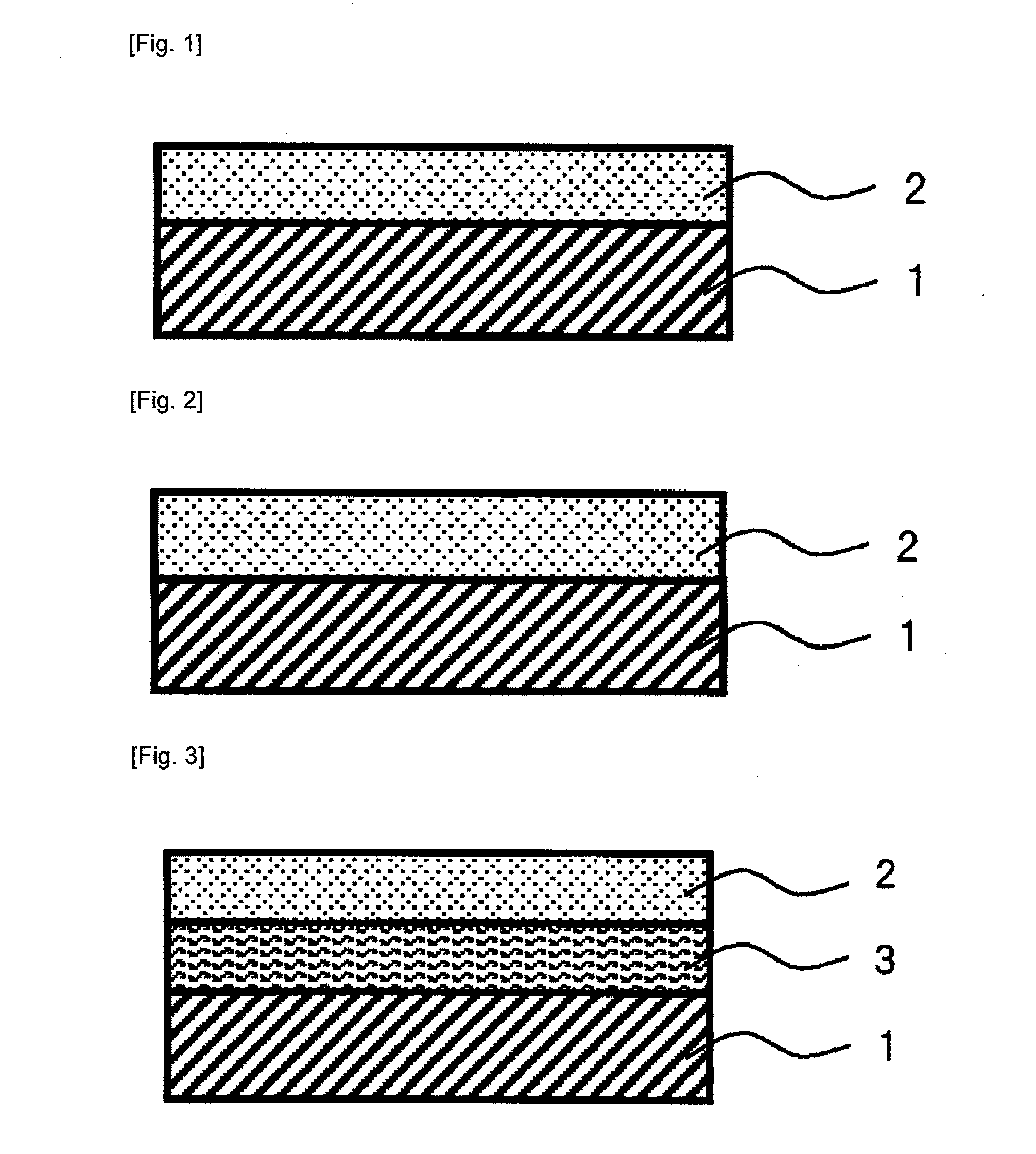Metallic material for a connecting part and a method of producing the same
a technology of connecting parts and metal materials, which is applied in the direction of conductive materials, surface reaction electrolytic coatings, coupling device connections, etc., can solve the problems of inferior conduction between the terminals, the difficulty of plugging in/out such a connector, and the inability to achieve the effect of sufficient gloss
- Summary
- Abstract
- Description
- Claims
- Application Information
AI Technical Summary
Benefits of technology
Problems solved by technology
Method used
Image
Examples
example 1
[0083]A rectangular wire of Corson alloy having a width of 0.64 mm was subjected to tin alloy plating to a thickness of 0.5 μm. Thereafter, the material was subjected to a reflow treatment at 350° C. for 10 seconds, and thus a rectangular wire material as shown in the partially enlarged schematic cross-sectional view of FIG. 1 was obtained. In FIG. 1, a part near the center point of one side of the rectangular wire material is shown in an enlarged view (the same in the following figures). In FIG. 1, the reference numeral 1 denotes a base material, and the reference numeral 2 denotes a copper-tin alloy layer.
example 2
[0085]A rectangular wire of Corson alloy having a width of 0.64 mm was subjected to copper plating to a thickness of 0.3 μm, and then was subjected to tin alloy plating to a thickness of 0.5 μm. Thereafter, the material was subjected to a reflow treatment at 500° C. for 5 seconds, and thus a rectangular wire material as shown in the partially enlarged schematic cross-sectional view of FIG. 2 was obtained. In FIG. 2, the reference numeral 1 denotes a base material, and the reference numeral 2 denotes a copper-tin alloy layer. The copper plating layer had completely reacted with the tin alloy plating of the outermost layer, by the reflow treatment, and converted to a copper-tin alloy layer 2.
example 3
[0087]A rectangular wire of Corson alloy having a width of 0.64 mm was subjected to nickel plating to a thickness of 0.4 μm, subsequently subjected to copper plating to a thickness of 0.3 μm, and then subjected to tin alloy plating to a thickness of 0.5 μm. Thereafter, the material was subjected to a reflow treatment at 500° C. for 5 seconds, and thus a rectangular wire material as shown in the partially enlarged schematic cross-sectional view of FIG. 3 was obtained. In FIG. 3, the reference numeral 1 denotes a base material, the reference numeral 2 denotes a copper-tin alloy layer, and the reference numeral 3 denotes a nickel layer. The copper plating layer had completely reacted with the tin alloy plating of the outermost layer, by the reflow treatment, and converted to a copper-tin alloy layer 2.
PUM
| Property | Measurement | Unit |
|---|---|---|
| Percent by mass | aaaaa | aaaaa |
| Percent by mass | aaaaa | aaaaa |
| Percent by mass | aaaaa | aaaaa |
Abstract
Description
Claims
Application Information
 Login to View More
Login to View More - R&D
- Intellectual Property
- Life Sciences
- Materials
- Tech Scout
- Unparalleled Data Quality
- Higher Quality Content
- 60% Fewer Hallucinations
Browse by: Latest US Patents, China's latest patents, Technical Efficacy Thesaurus, Application Domain, Technology Topic, Popular Technical Reports.
© 2025 PatSnap. All rights reserved.Legal|Privacy policy|Modern Slavery Act Transparency Statement|Sitemap|About US| Contact US: help@patsnap.com



